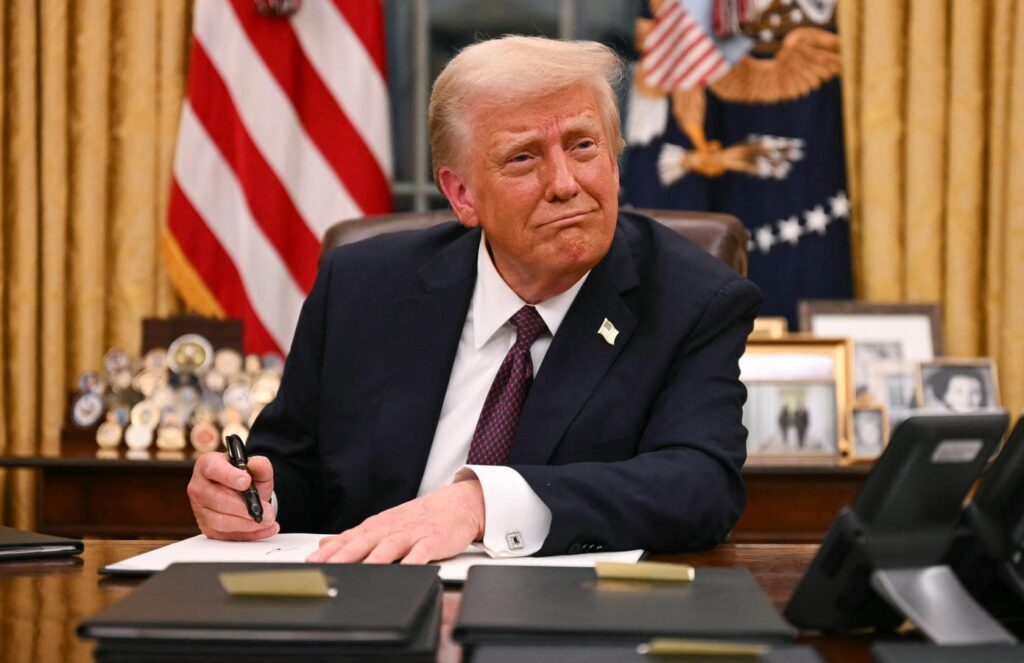On February 1, 2025, the United States is set to impose tariffs on imports from Canada and Mexico. President Donald Trump has justified this move as a strategy to address three key issues: curbing illegal immigration, reducing fentanyl trafficking, and correcting trade imbalances with these neighboring countries while at the same time restoring U.S. manufacturing prowess. The truth is that we won’t know the potential impact of tariffs on all parties until we know the policy. Even then, the future policy could change at a moment’s notice.
The current base case is for a universal import tariff of 25% that would apply to all goods from Canada and Mexico entering the United States. We don’t know whether there will be any exclusions yet. President Trump has indicated that he may or may not exempt crude oil imports. Approximately 20-25% of U.S. crude oil production relies on Canadian oil, as Canadian crude makes up over 60% of U.S. crude oil imports. Lower energy prices are an essential part of Trump’s industrial strategy.
From a purely economic perspective, excluding Canadian oil from any tariffs would make sense. First, American refineries can’t simply switch to the lighter-grade oil found in the U.S. More than 70% of U.S. refining capacity is optimized for heavier crude oils found in countries like Canada and Saudi Arabia. Refitting the refineries to use the type of oil found in the U.S. would take billions of dollars and years to finish.
Second, a tariff on Canadian oil would likely lead to higher U.S. gas prices as refineries could not operate at capacity. For a president who campaigned on reducing inflation, it’s hard to imagine a spike in domestic gas prices would be well received by his political base. However, economics are not the only driver for the current administration, and oil tariffs should not be ruled out if they are seen as essential in extracting concessions on immigration and border control.
Selective exemptions, other than oil, are also a possibility. Mexico accounted for 64% of U.S. vegetable imports, making it the leading supplier of fresh vegetables to the U.S. Tomatoes, avocados, peppers, etc, can be grown year-round in Mexico and would be difficult to substitute in the U.S. Similar to the likely outcome of oil tariffs on Canada, a 25% import tax on Mexican agriculture could also lead to higher prices for U.S. consumers.
The problem with selective exemptions is that they open the door for industry lobbyists, increasing the chance that decisions will be made politically rather than economically. Also, selected tariffs can inadvertently worsen trade imbalances by encouraging importers to source goods from untargeted countries rather than boosting domestic production, similar to China’s use of connector countries like Vietnam to reroute trade.
Another possible outcome is the use of temporary tariffs. Tariffs could serve as a bargaining chip in negotiations that would be lifted if Canada and Mexico agree to U.S. demands on controlling illegal immigration and fentanyl smuggling. However, Trump may be jaded by his experience in 2020 with China, when he lowered tariffs in exchange for China buying $200 billion of U.S. exports. China ended up purchasing only 58 percent of the committed amount. This experience may bias the U.S. tax first and reduce it later after all the negotiated demands are met.
Another variable that is impossible to model at this point is the response of Canada and Mexico. Both countries have indicated they will respond with retaliatory tariffs, potentially leading to a drawn-out trade war. The retaliatory response will depend on the level of U.S. tariffs and whether they are universal, selective, or temporary. Retaliatory tariffs would have a huge impact on many U.S. industries, particularly the automotive sector, where parts and partially finished goods can cross the Canadian and Mexican borders multiple times before completion. Until the U.S. policy is cemented, it is impossible to know how tariffs will impact various companies, industries, and the economy as a whole.
Other factors will come into play to make matters even more complex. For example, tariffs often lead to weaker currencies in affected countries, as seen with the Canadian dollar and Mexican peso, which have already fallen against the U.S. dollar. This depreciation could make their exports more competitive globally, partially offsetting the impact of tariffs.
Governments may also provide financial support to affected industries and workers to mitigate economic disruptions. In addition, Canadian and Mexican exporters could reduce prices or absorb some tariff costs to maintain competitiveness in the U.S. market, potentially reducing the impact on U.S. consumers.
The tariff situation is extremely fluid, with the outcome dependent on many variables. Predicting the impact of tariffs before we know the actual policy goals is akin to former U.S. Secretary of Defense Donald Rumsfeld’s quip about Iraq two decades ago when he said, “There are known knowns; there are things we know we know. We also know there are known unknowns; that is to say, we know there are some things we do not know. But there are also unknown unknowns—the ones we don’t know we don’t know.” Right now, we don’t know enough to predict the impact. Undoubtedly, there is a lot of scenario planning behind the scenes.
All eyes are on how these tariffs will be implemented. Will they be used for negotiating purposes? Will they be used for revenue generation? Will they be universal or targeted? Will they be permanent or temporary? Will they be used at all? One thing we do know is that the new administration is not afraid to break things. Policymakers and businesses should prepare for anything.
Read the full article here

